Prague underground, which Czech people call the ‘Metro’ has only three lines – Line A, B, C and it’s a quick and easy way to get across the whole of Prague. The three lines intersect in the middle and you can easily change to A, B or C line regardless of which line you are on.
The whole Prague underground network is only 62 km long and has 61 stations in total. The first station opened in 1974, and new sections of metro have been added each decade or so.
Work has already started on a new line D (Blue line) which will run from Namesti Miru (The Peace Square) to Pisnice with 10 new stations in between, including stops at Nemocnice Krc and Libus. The work is planned to be finished by 2029.
I use the Prague public transport on daily basis and I find that if you are travelling across the whole city, it’s quicker to cover longer distances by underground and then change to a tram network for the last few stops to get you wherever you need to go.
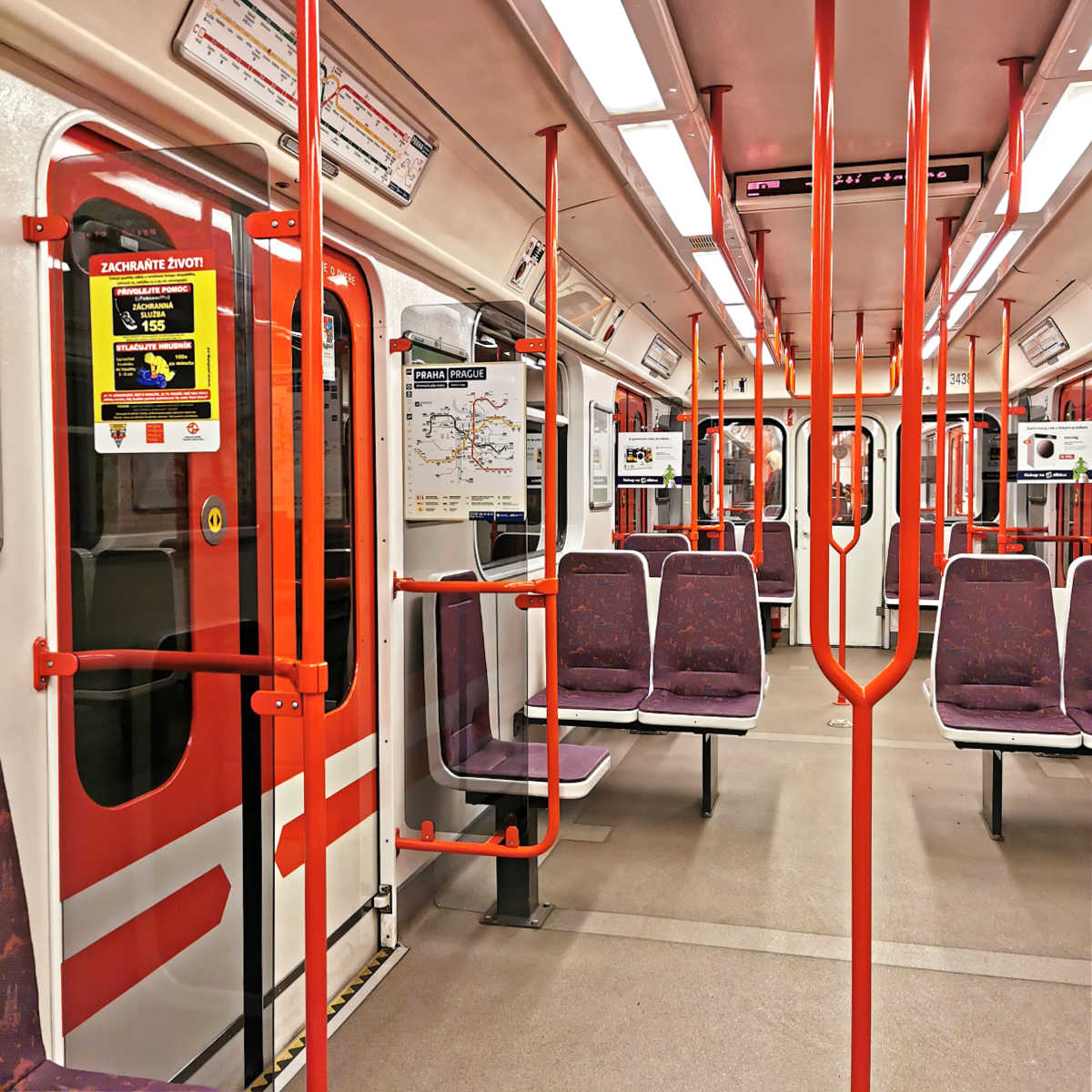
Prague Metro Lines
Line A (Green Line) – Dep Hostivar – Nemocnice Motol (Hospital Motol)
17 stations
Line B (Yellow Line) – Cerny Most – Zlicin
24 stations
Line C (Red Line) – Letnany – Haje
20 stations
Prague Underground Changes & Planned Closures for 2024
There are no planned or current underground closures at present.
There are currently on-going works at Florenc Underground entrance and some exits are being closed. You can still access the underground and the station and any changes are clearly signposted.
Prague Metro Exchange Stations
Prague Metro has only 3 interchanging stations, which means that if you make a mistake or take the wrong line, you can easily get back and change again (or carry on and change at the next station).
Mustek – Lines A and B (bottom of Wenceslas Square and close to the Old Town Square)
Muzeum – Lines A and C (top of the Wenceslas Square, under the National Museum)
Florenc – Lines B and C (next to the Florenc Prague Main Bus Station and close to Karlin)
Ticket Offices
The offices at the entrance of each metro station are control offices not ticket or information point offices.
Paper tickets can be bought in yellow vending machines at the entrance of any underground (metro) station.
You can buy as many tickets as you like – they don’t expire (or are valid) until you stamp them at the small yellow time stamp machine as you go down the escalators.
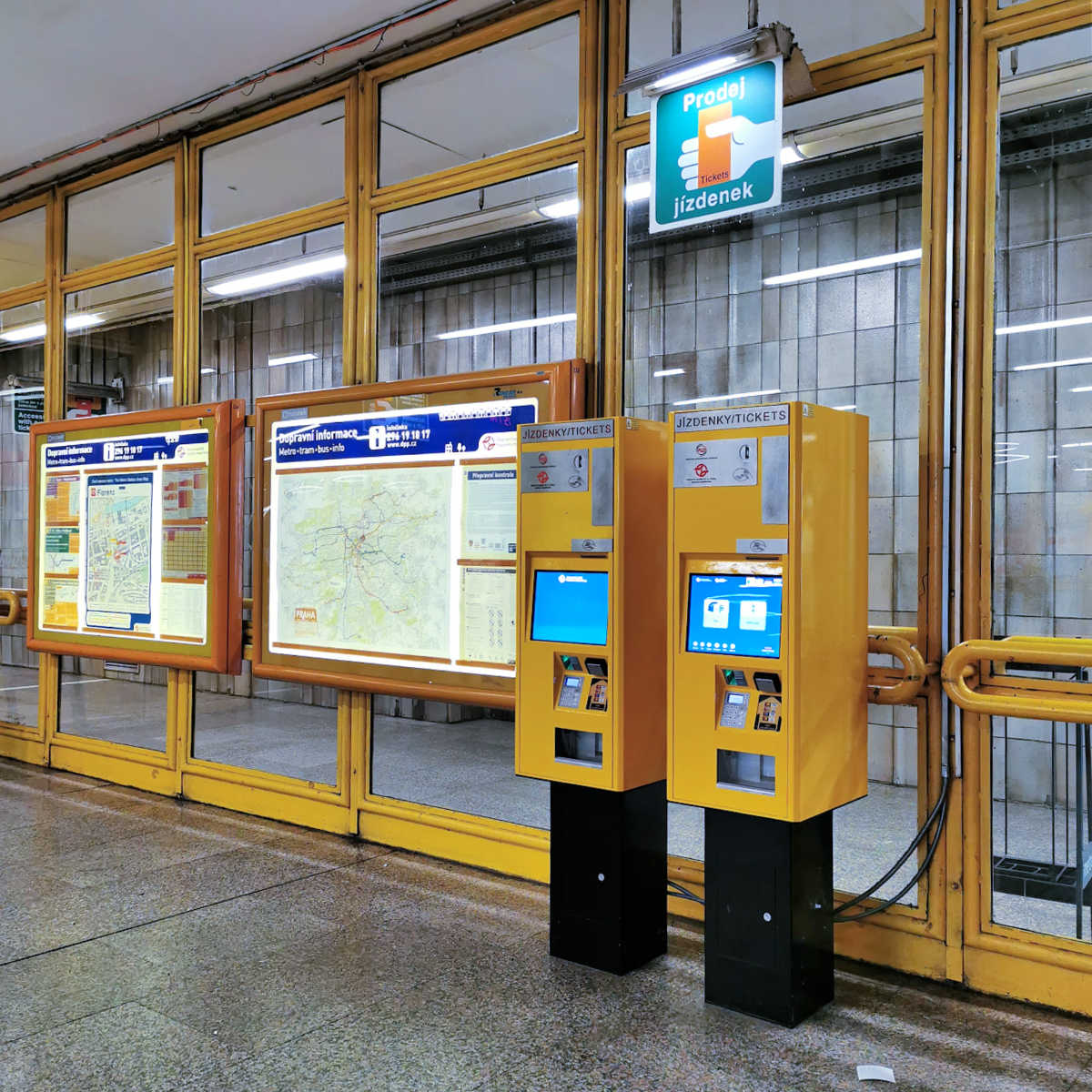
How to Buy and use the metro tickets
You can buy paper tickets at the vending machines as you enter any underground station.
If you know that you are going to use more than one ticket, you can always buy more single tickets and keep them. The tickets are only valid when you stamp them with time (in the small yellow machines as you enter the underground).
Another option is to download the public transport app, to your smart phone and buy your tickets through your phone. The app is called ‘pid’ or ‘litacka’ (more info on https://app.pidlitacka.cz/).
You can also buy tickets by sending a text to 90206 and specifying which ticket you would like – DPT31 (30 min basic ticket), DPT42 (90 min standard ticket), DPT120 (24 hrs ticket) or DPT330 (72 hrs ticket).
After a couple of minutes, you will receive a confirmation text with your ticket. The problem with this system is that you need to have a local SIM card for this to work, but I know some of you might be staying in Prague for longer (and might have a local phone number), which is why I’m mentioning this too.
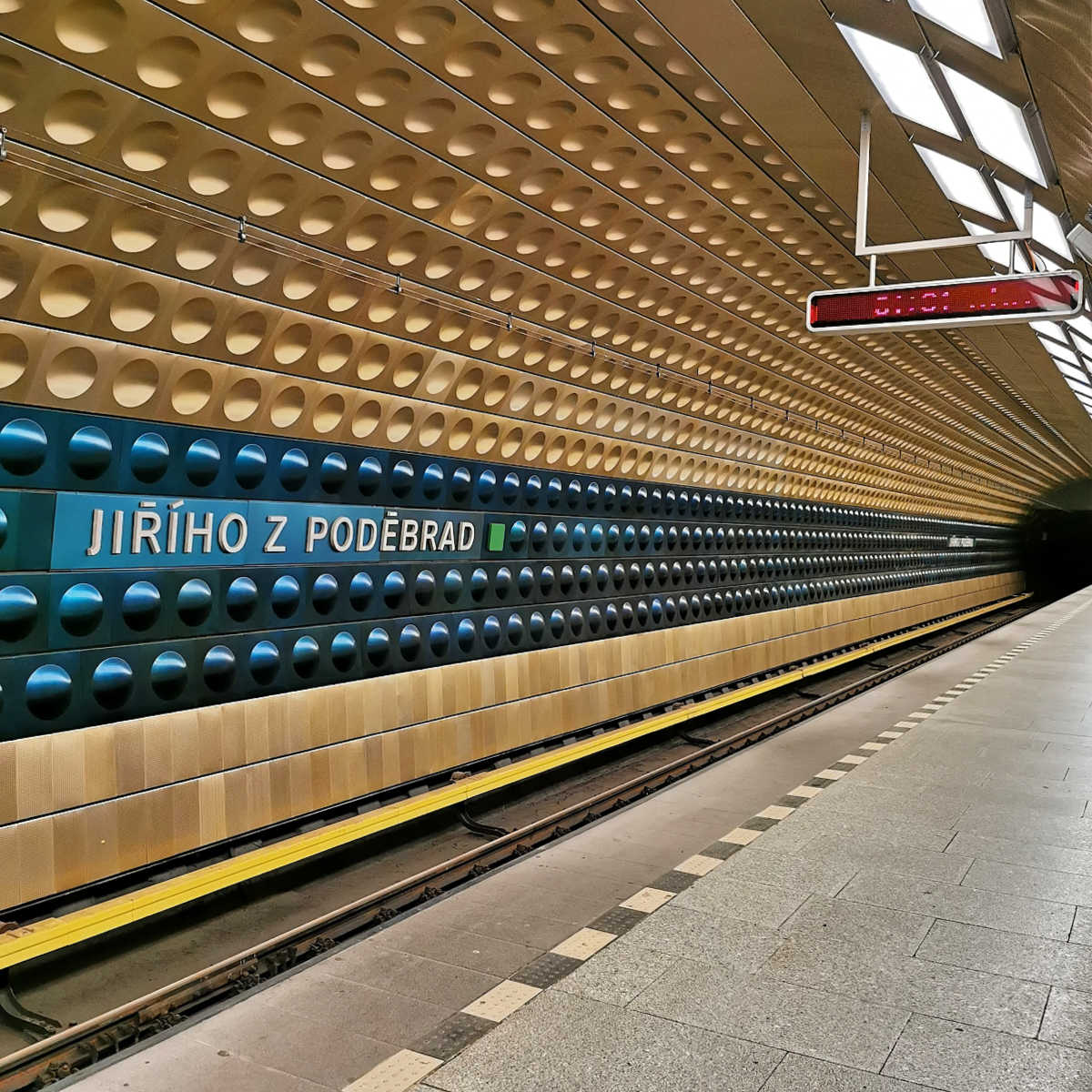
Which type of ticket do I buy?
The standard ticket costs 40 CZK and is valid for 90 minutes within the whole of Prague city on the underground, tram, bus or even a river ferry. You can change as many times as you like within this time.
The shorter ticket costs 30 CZK and is valid for 30 minutes on public transport within Prague city. This ticket is perfect to buy if you know that you need to use it for a few stops or a very short journey.
If you are not completely sure, buy the standard ticket (valid for 90 minutes) as this will be plenty for any type of journey even if you need to go back to your hotel (if you forget something) or have a more complex journey ahead of you (e.g. few changes to get to your destination).
The 10 CZK difference between the tickets is a small price to pay for not having to worry about the end of your ticket validation time if your travel arrangements change halfway through your journey.
If you are staying for a longer time or you know you want to explore Prague by using public transport instead of walking, you can also get 1 day or 3 days travel cards.
These travel cards are great because they are valid for 24 or 72 hrs and their times start when you validate them at the beginning of your first journey. This means that if you start your first journey in the afternoon after you arrive at your hotel, your ticket will still be valid until the same time the next day! That’s practically 2 days of travel for 1 day!
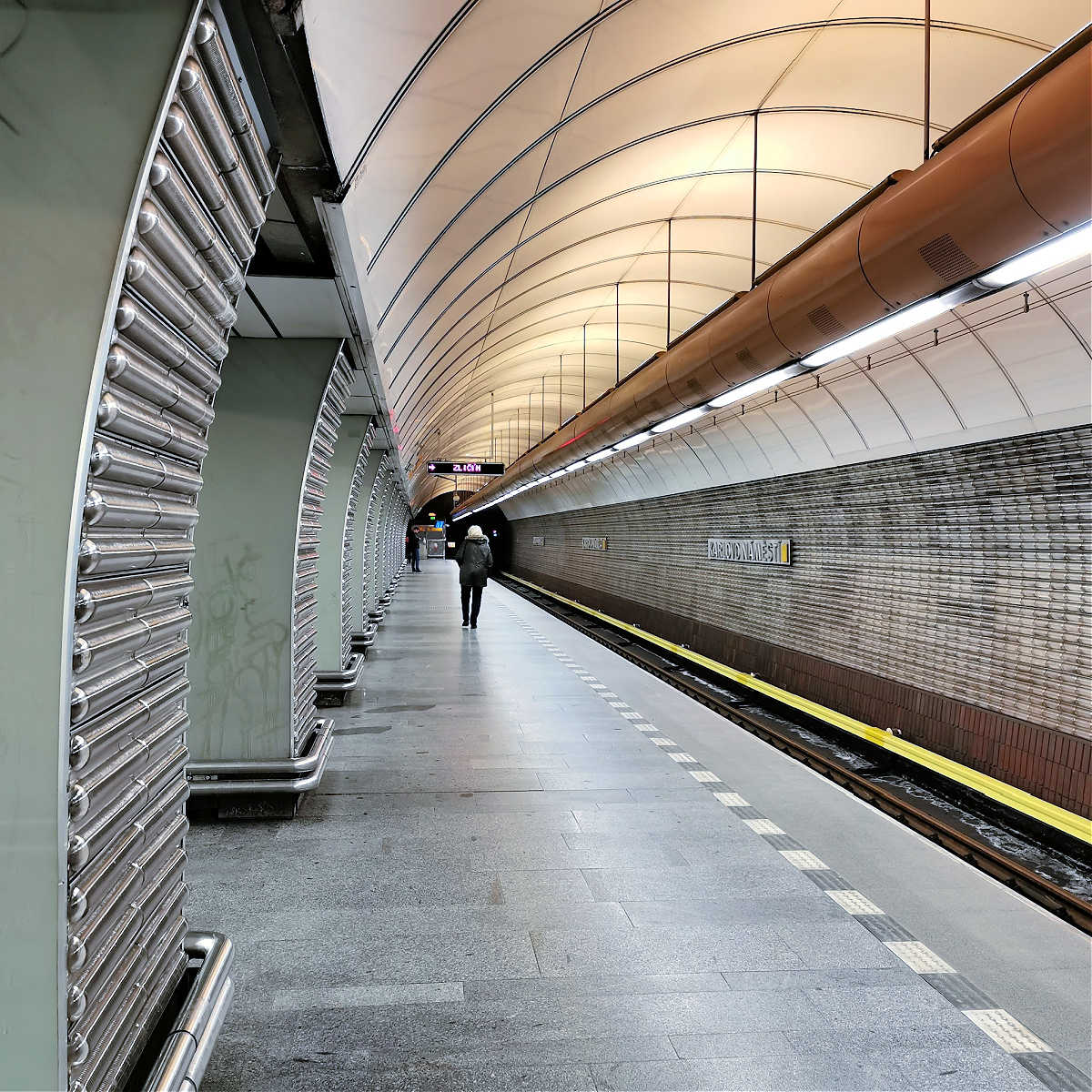
Monthly travel card
There is also another type of travel card, which you might like to consider if you are staying for more than 2 weeks and you are planning to do a lot of travelling by public transport.
The monthly travel card is valid for 30 days (any 30 consecutive days) and costs 1000 CZK. This might seem like a lot, but I’ve worked out that even if you are in Prague for 12 days and buy one regular ticket in the morning and one in the evening to get back to your hotel, you will spend 1000 CZK in 12,5 days.
The monthly travel card can be bought in underground ticket offices only, such as Andel (B line) or Hlavni Nadrazi (The Main Train Station) and you don’t need any documents to buy the travel card.
The other good thing is that this type of travel card is transferable, which means that you can give it to your friend for a day, if for example, you are planning to stay local or go for the whole day to Prague Castle and your friend wants to explore the town more.
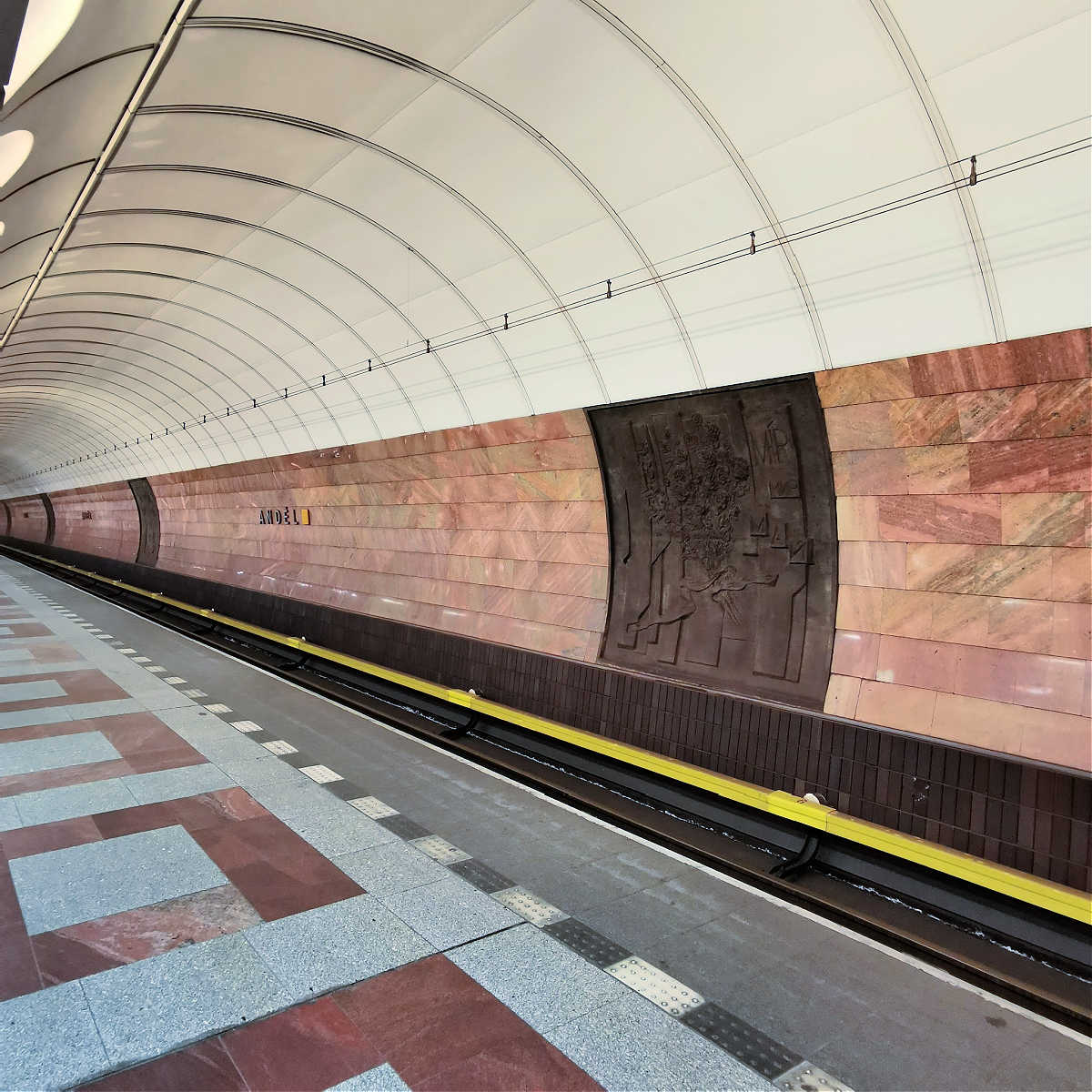
How to validate your ticket
Once you buy your ticket, make sure you validate it in the smaller yellow ticket machine at the entrance of the underground station. The machine stamps it with a date and time and you have either 30 or 90 minutes to get to your destination, including any changes.
There are no other validating machines once you get down to the train level, so make sure that you do this before you travel down on the escalators. If you forget, just go back up – it’s better to miss one train, that to get a fine!
There are no gates or barriers at the entrance to the metro, which would remind you to get a ticket or validate it, but that’s not an excuse to travel without a ticket (as tempting as this might be).
You might also see people who are not stopping to validate their tickets. These are people who have already validated their individual tickets and are changing say from tram to underground or are people who have a day or 3 day travel cards.
The majority of local people – adults and children alike – will have a monthly travel card, which doesn’t require any stamping or validating. These people would also be going through the barriers seeming to look like they are ignoring the ‘validate your ticket please rule’.
You don’t need to validate the ticket again when you change. Your ticket is also valid on trams, town buses, river ferries (in the summer season) and trains within Prague city as long as you still have enough time left on your ticket.
One day or three day tickets are also valid on the Petrin Hill funicular starting at Ujezd and taking you to the Petrin Lookout Tower, Hunger Wall and Kinsky Garden as well as the top of the Strahov Monastery. (otherwise you need to buy a separate ticket – 60 CZK).
Ticket Inspectors
Ticket inspectors are in plain clothes (not uniforms) and do regular spot checks. In the underground, they are usually (but not always) at the major changing stops (Mustek, Muzeum, Florenc) standing where you change from one line to another.
There is usually more than one (two or three) and you know when they are there because the flow of people leaving or coming to the underground is disrupted. They don’t stop everyone.
Currently, the fine for not purchasing a ticket or not having your ticket properly validated or being out of time is 1500 CZK, but if you pay on the spot or within 2 weeks, you’ll only pay 800 KCZ.
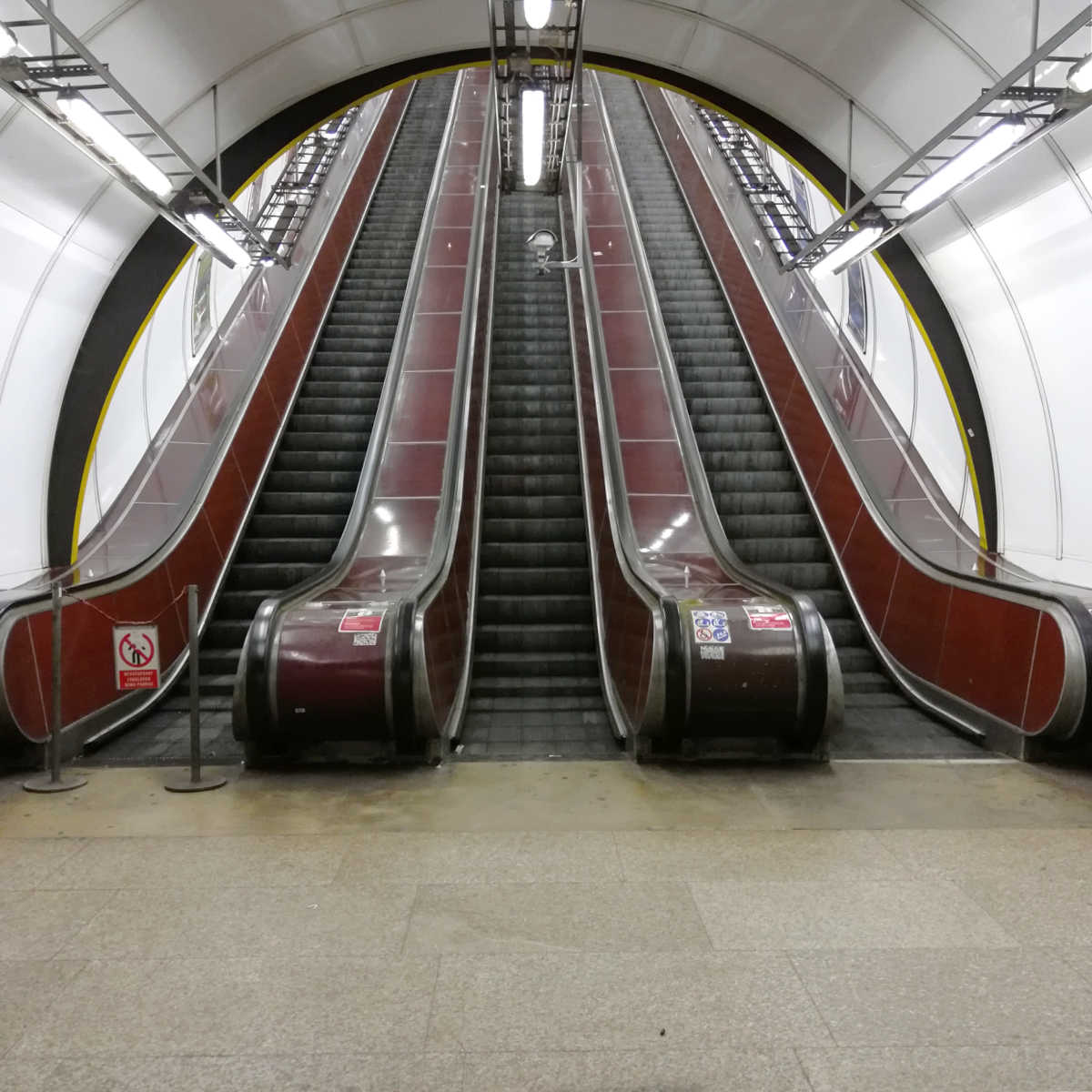
Prague Metro operating times
The metro opens each day at 4.45 – 5 am and closes after the last train leaves at 12 midnight.
In reality whilst the station opens at 4.45 – 5 am the first train might not arrive until a few minutes later as the train starts at the last stop depo at 4.45- 5 am.
The same goes for the evening – the last night train leaves at 12 midnight, which means that it might arrive a few minutes or more later.
Between midnight (after the last train leaves) and 5 am (before the first train leaves) the Prague underground is completely closed.
You can use an alternative way of travelling around the city at night and use the Prague public transport night trams or buses, which run through the whole night.
Prague underground rush hours
To make your underground journey as pleasant as possible, you might like to know when the metro is at its busiest (partly to avoid the crowds it or to be mentally prepared!).
Czech people often start working earlier than in other western countries or in the UK.
This means that rush hour is from 6-9 am with busy times still before 6 am and after 9-10 am. Manual workers’ jobs usually start at 6 am, children start school at 8 am and so do a lot of offices.
Shops and international or private companies usually start at 9 am. This means that before all of these times, you will get an influx of people travelling to work and school.
In the afternoon it’s in reverse. School children usually finish between 12-1 pm (older children 1-2 pm), construction or manual workers at 2 pm, and office workers between 4-5 pm.
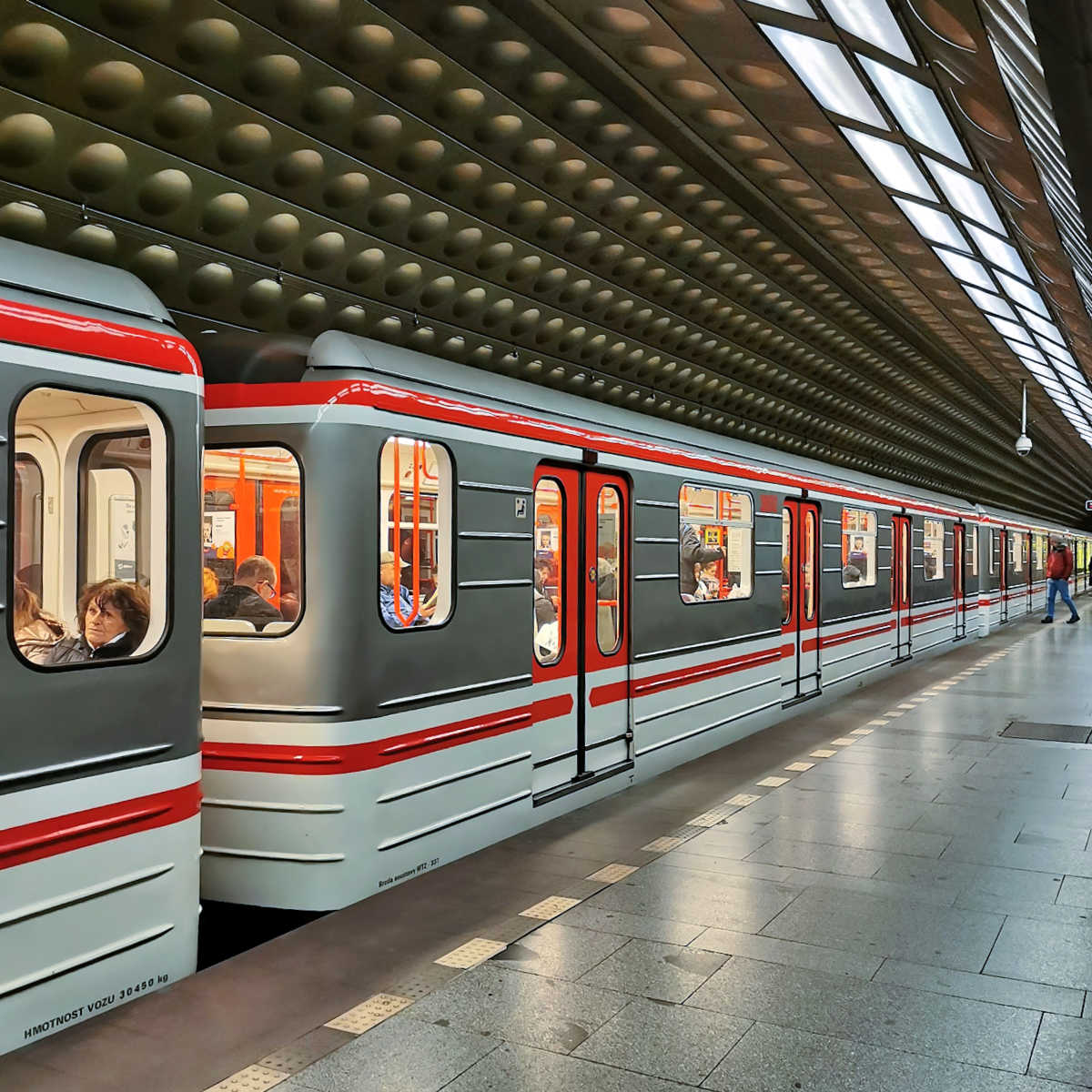
Metro train running frequency
During the morning (6-9 am) and afternoon (4-6 pm) commute the trains run every 2-4-5 minutes. During the rest of the day is more like 5-7 minutes and after 10 pm the trains might be every 8-10 minutes.
Saturdays and Sundays trains are less frequent, but still run every 4-7 minutes depending on the time of the day (there are longer intervals in the evening).
Public holidays and special days are also less frequent – 6-12-15 minutes.
There is an easy way to know when your next train is coming. At the front of what would be the first train carriage is a regular clock and stop clock that adds time every time the train leaves. (this is the original way of working out the times and you still need to guess when the next train is coming based on your experience of how frequent the service is).
In the middle of the platform in a slightly large display, you have time counted down to the next train (which kind of makes more sense…).
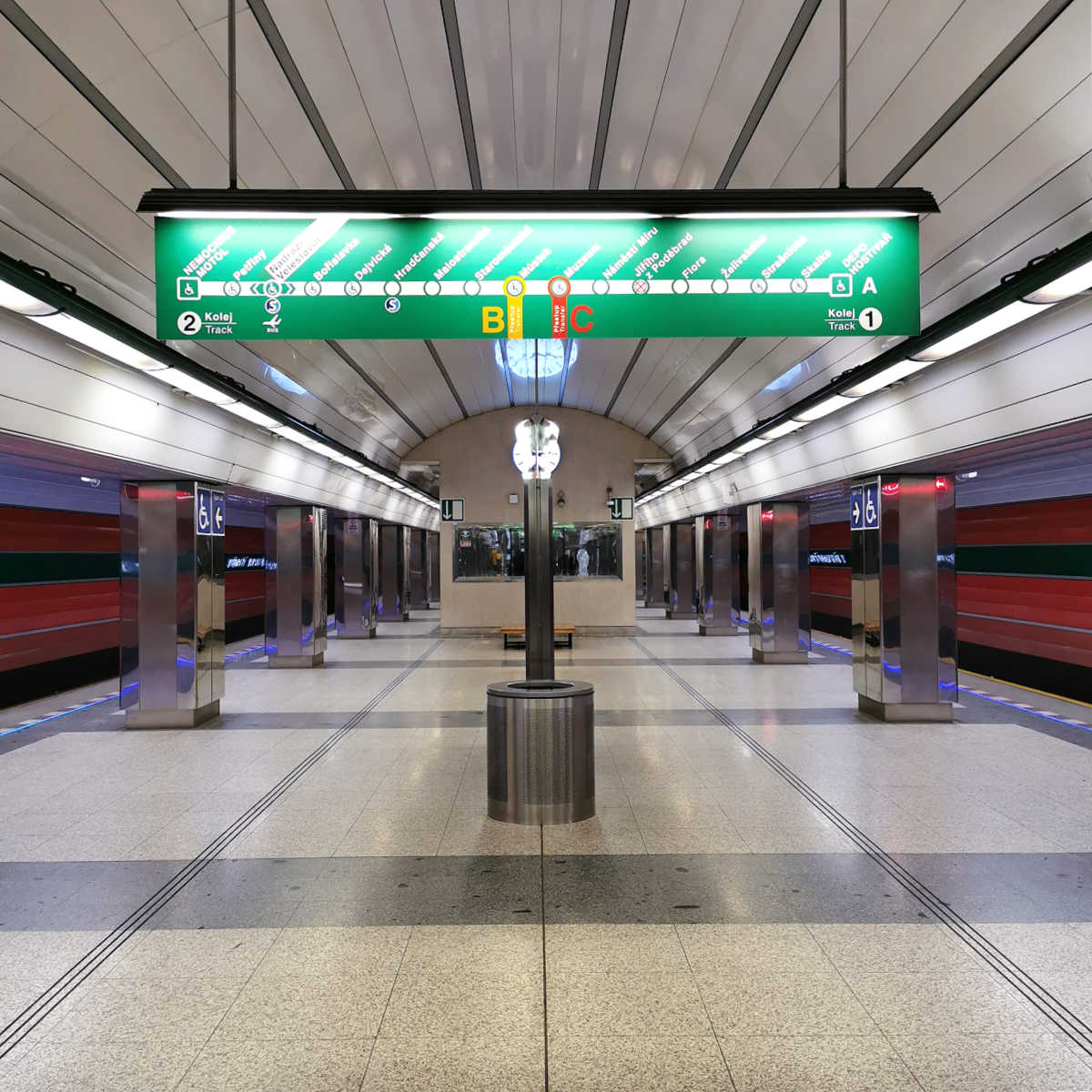
Finding your way around the Prague Underground
Most of the underground stations have a single platform in the middle and the trains run on either side – one for each direction.
Practically all notices, display boards and signs are now in Czech and English language, so you shouldn’t have a problem working your way around the Prague underground.
There are maps of surrounding areas and maps of the underground at every entrance to the underground (usually next to the self-service ticket machines).
Once you go down the escalators, you will find more maps and information boards in the middle of the station.
There are display boards hanging from the ceiling of all the underground stations on the line where you are marking the exact station where you are.
You will also see the end stations of each line pointing left or right to help you to choose the right platform.
The funny thing about these is that these boards are the first visible as you enter, but if you can’t remember (or don’t know) on which side your chosen station is, you need to walk or run (if your train is coming…) to the middle of the station to look which side you need to turn to.
There are also usually 2 exits (entrances) to each station – especially in the middle of Prague – one on each side of the station.
If you are not sure which one is the best exit for you, stay in the middle of the carriage and then look at the display boards when you get off the train.
Each train carriage also has the Prague Underground Map above each door for easy orientation.
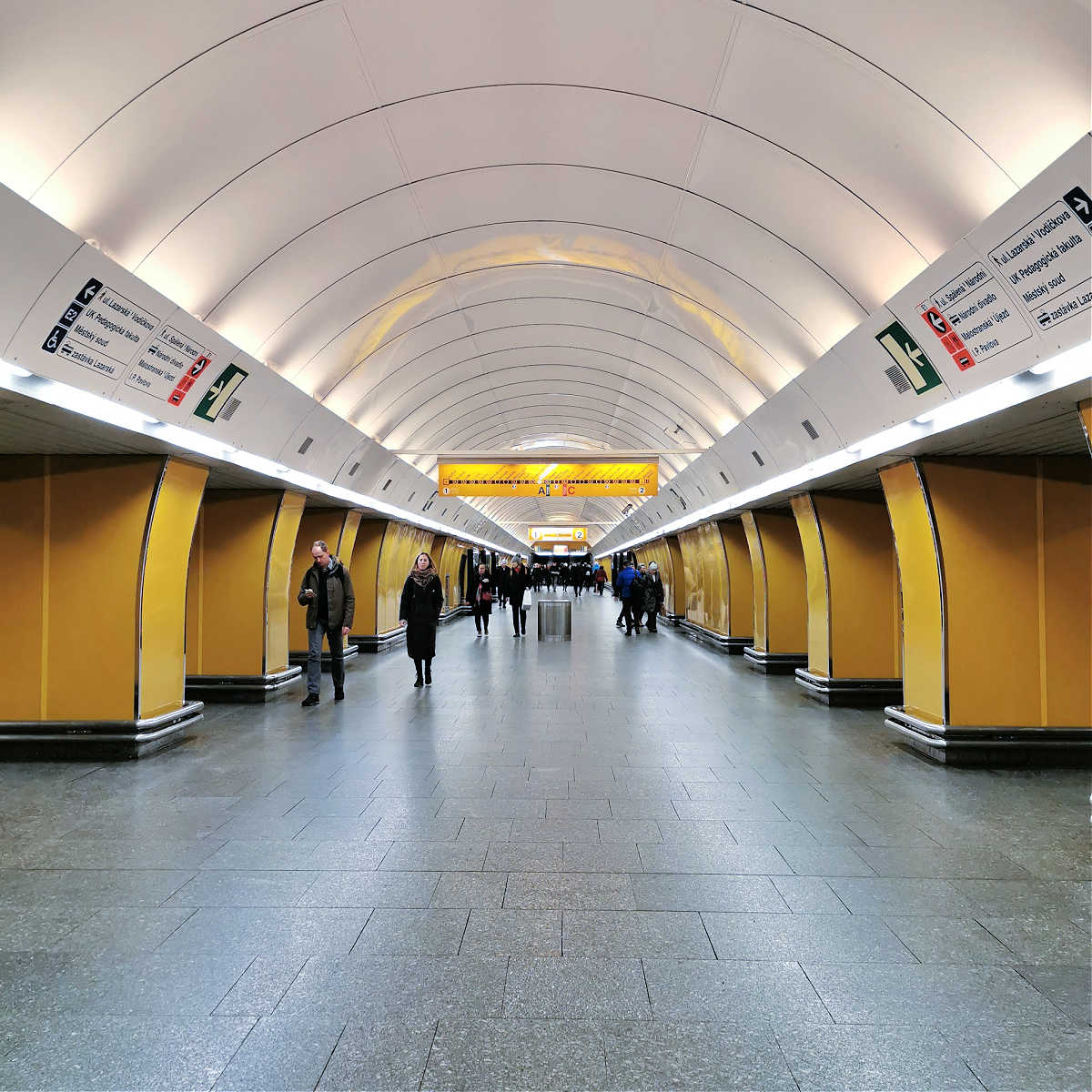
Prague Underground Train Announcements
Every time the train arrives, the announcement inside the carriage will tell you which stop you’ve just arrived at and what is the next stop.
In the Czech language it goes something like this: ‘ Ukoncete prosim vystup a nastup, dvere se zaviraji. Pristi stanice….’ (Please finish exiting and boarding (the train), the doors are closing. Next stop (will be) …..
Prague underground etiquette
You should always allow people to get off the train carriage first before you board the train. This is often ignored by tourists (and locals alike), but that’s what should happen.
There are also seats (the closest to the entrance of each carriage) which are designated for older people, people with mobility issues or pregnant women.
Again, if you are not one of these groups of people, move on to the middle of the carriage and sit there. If you do sit in these seats be prepared to get up if you see somebody else who needs the seat more than you.
Also, if you are scrolling on your phone and somebody actually asks you to give up your seat, please be kind and get up.
You also should refrain from eating or drinking (and certainly not eating any smelly type of food or drinking alcohol in public), although if you bite into a bread roll or have a sip of water, nobody is going to object.
Refreshments
There are no refreshments once you enter the ‘paid underground area’ and I think the Prague Underground Company would prefer you not to eat or drink whilst you travel.
There are usually some refreshments stalls or small bakeries and vending machines at the entrance to the underground. These might be slightly more expensive than regular shops, but not excessively, especially if you travel away from the Prague tourist centre.
You will also find larger supermarkets (with regular food and drink prices) or at least a cluster of shops surrounding the outside of most underground stations.
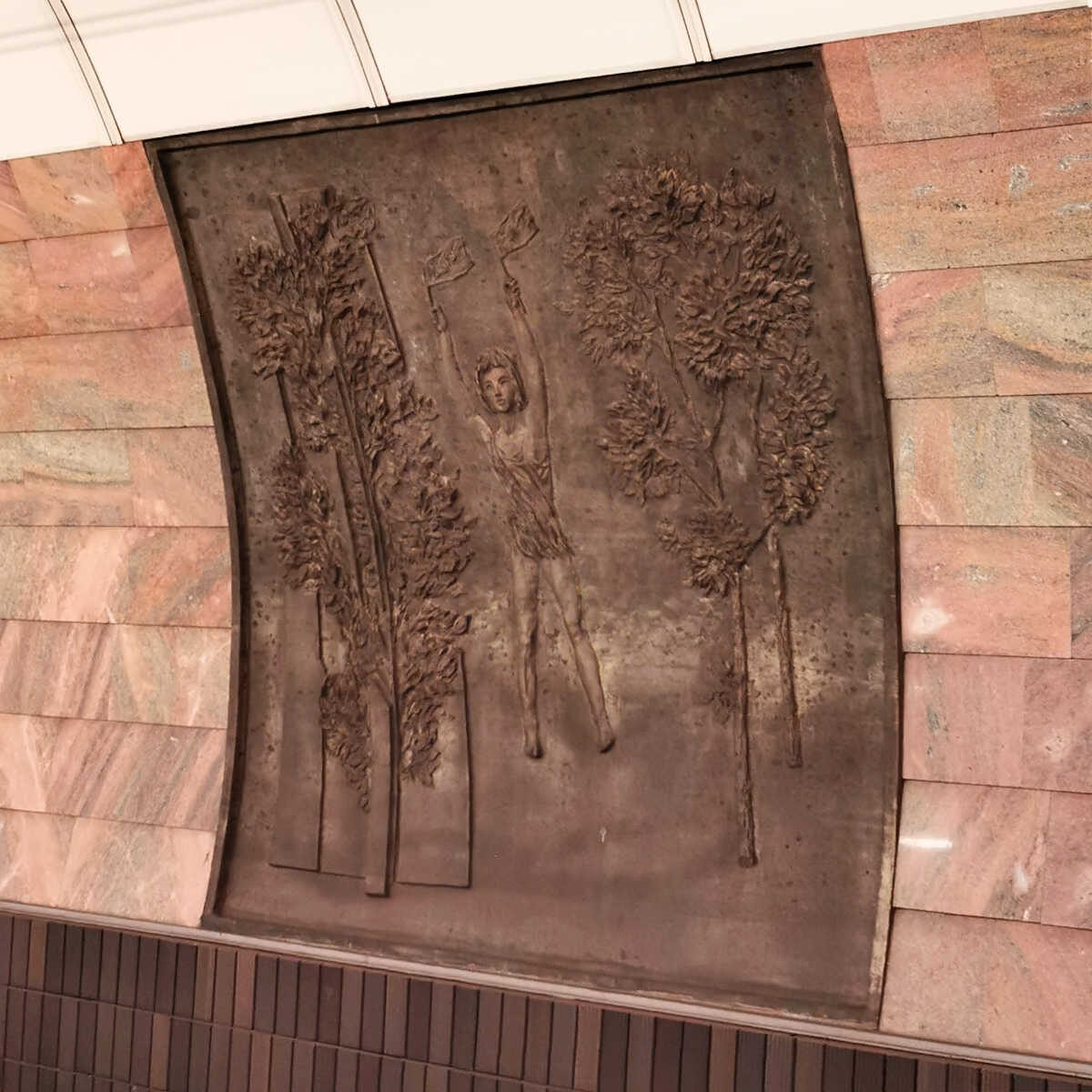
Toilets
Not every station has public toilet facilities, in fact, most of these have been closed over the years.
If there are toilets, these are nearly at the surface level, usually, as you go down the first set of steps into the underground foyer (where you can also buy your ticket at the vending machine) and before you enter the paid area of the underground.
Toilets on the underground are very old-fashioned with basic facilities. They are always payable (approx 15-25 CZK) and you will need Czech crowns in cash as most won’t take other currencies or debit or credit cards.
Easy Access
Since most of the older underground stations were not built with lifts or easy access levels, not all of the stations have lifts.
Over the years, the lifts have been added in, but because the original designs didn’t include space for these, they are usually built outside the station or around the corner from the entrance.
What makes it even more frustrating, is that some, like the one at Mustek or Narodni Trida are not straight-down lifts, but they only get you half way down and then you need to walk/wheel yourself across the corridor to the next lift that takes you the rest of the way.
This is apparently a safety feature, in case there was a fire, for example, the fire would be contained in one level and won’t automatically spread through the lift shaft.
Free Wifi
The Prague underground company has been rolling out free wifi connection through the underground, but I have to say it doesn’t always work. It works best at the stations (when you are waiting for your train).
Travelling safely
The main underground stations are always busy, which unfortunately attracts people who might not have your best interest at heart.
Please keep all your belongings with you, never leave them unattended and be careful with your purse and money always keeping them safe on your person.
Occasionally you might see homeless people and people who sleep rough or beg for money. They are usually fairly harmless and keep themselves to themselves, but if anyone approaches you, just politely decline and calmly walk away. There are charities and social workers regularly working with these people.
When you travel at night and you are on your own, it’s a good idea to stay in a carriage that has other people (of various ages, not just one group) rather than stepping into a carriage that’s completely empty.
READ MORE
STAY IN TOUCH
Hope this blog post inspires you and as ever I’d love to what you think! Let me know in the comments below or catch up with me over on Instagram.
Magdalena
PIN TO KEEP FOR LATER
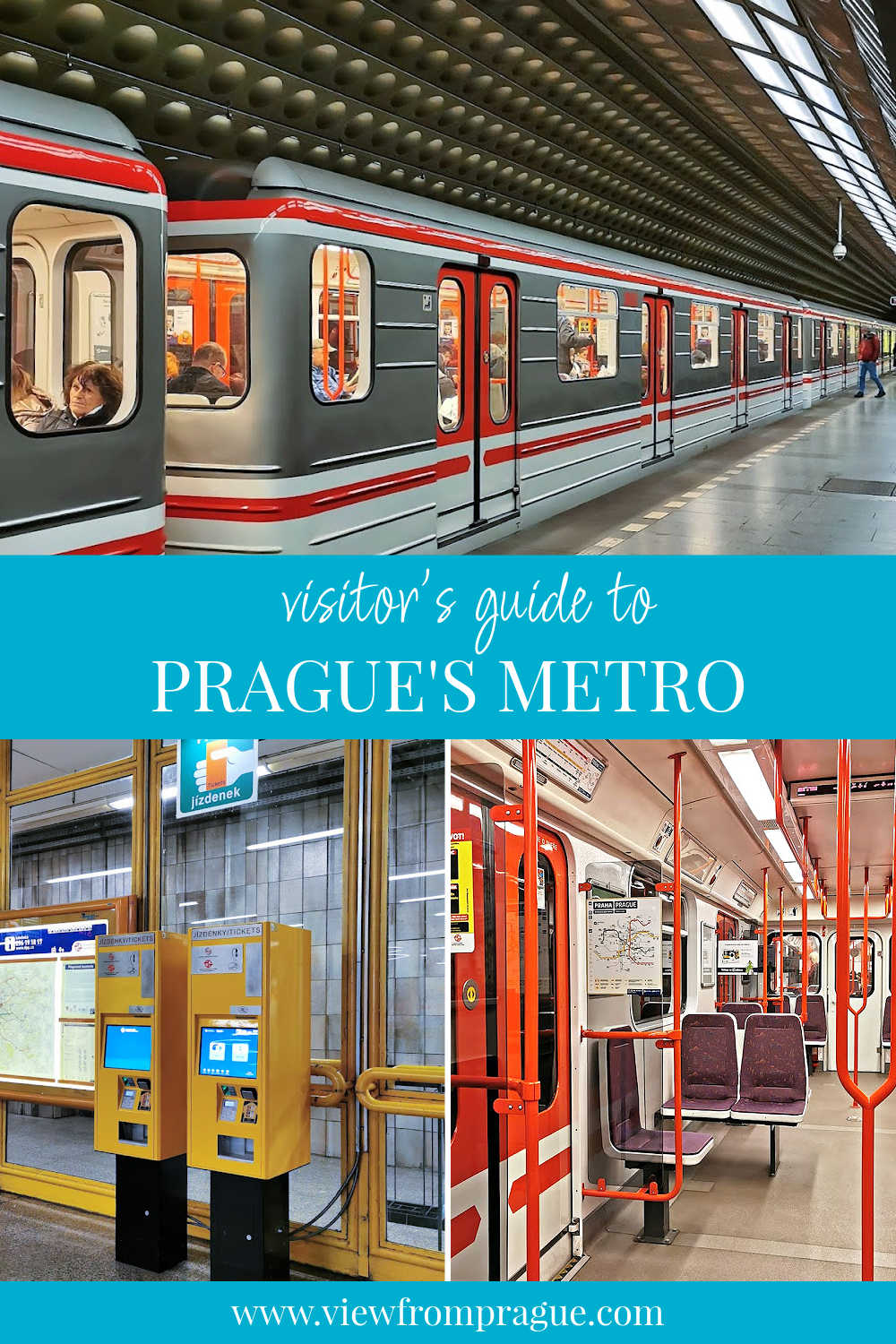
This blog post was originally written on 09 February 2023 and last updated on 09 February 2023
